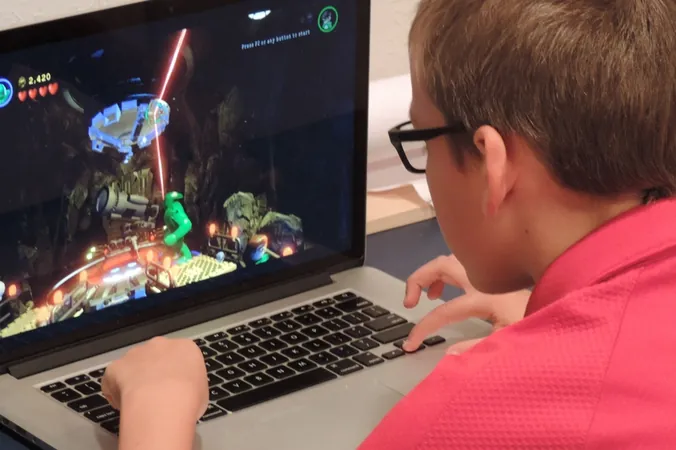
Revolutionary AI Model Could Prevent Falls Before They Happen!
2025-07-11
Author: Siti
Texas Tech University Researchers Make Strides in Fall Prevention
In an exciting breakthrough, researchers from Texas Tech University, led by Shuo Yu, have developed a groundbreaking generative machine learning model designed to predict falls before they occur. Published in the journal *Information Systems Research*, this innovation aims to revolutionize fall detection devices—including anti-fall airbag vests and medical alert systems—significantly reducing injuries and healthcare costs.
How Does It Work?
Yu, who holds the Wetherbe Professorship in Management Information Systems, describes the model as a sophisticated AI that monitors movement status to foresee potential falls. "It can help mitigate injuries automatically," he explains.
To forge this cutting-edge model, Yu and his team analyzed two publicly available datasets from wearable motion sensors, tracking nearly 2,000 fall incidents. With painstaking detail, they labeled and categorized individual data points into three key stages of a fall: collapse, impact, and inactivity.
Understanding the Science Behind the Model
Yu likens the fall prediction process to the sensation of being in an elevator where initial upward acceleration creates a brief feeling of weightlessness—this is analogous to the collapse phase in falls.
"Those milliseconds are what matter," Yu emphasizes. The model is designed to process this data urgently, activating protective measures like airbags to minimize injury.
A New Approach: Combining HMM with GAN
Breaking away from traditional rule-based models, Yu's innovation employs a fusion of hidden Markov models (HMM) and generative adversarial networks (GAN), dubbed HMM-GAN. This sophisticated integration allows the model to analyze complex data sequences and recognize fall patterns—adaptable across varied individual movements.
Impressive Results That Could Change Lives
The HMM-GAN model demonstrated remarkable accuracy across four experiments, predicting falls faster than previous methods. This is particularly promising for the elderly and their families, potentially allowing for quicker responses in fall detection, ultimately saving lives and stabilizing healthcare costs.
A case study illustrated this with an astounding potential economic benefit of over $33 million by reducing catastrophic falls among seniors compared to existing models.
Looking Ahead—The Future of AI in Healthcare
Yu expressed his excitement about these promising results, viewing them as a proof of concept that could pave the way for further research and real-world applications. He envisions a future where AI systems can play a transformative role in health care, much like existing technologies such as ChatGPT.
As this innovative technology progresses, it not only aims to enhance physical health but also to alleviate some fears associated with AI, marking a fantastic leap towards safer living.


 Brasil (PT)
Brasil (PT)
 Canada (EN)
Canada (EN)
 Chile (ES)
Chile (ES)
 Česko (CS)
Česko (CS)
 대한민국 (KO)
대한민국 (KO)
 España (ES)
España (ES)
 France (FR)
France (FR)
 Hong Kong (EN)
Hong Kong (EN)
 Italia (IT)
Italia (IT)
 日本 (JA)
日本 (JA)
 Magyarország (HU)
Magyarország (HU)
 Norge (NO)
Norge (NO)
 Polska (PL)
Polska (PL)
 Schweiz (DE)
Schweiz (DE)
 Singapore (EN)
Singapore (EN)
 Sverige (SV)
Sverige (SV)
 Suomi (FI)
Suomi (FI)
 Türkiye (TR)
Türkiye (TR)
 الإمارات العربية المتحدة (AR)
الإمارات العربية المتحدة (AR)